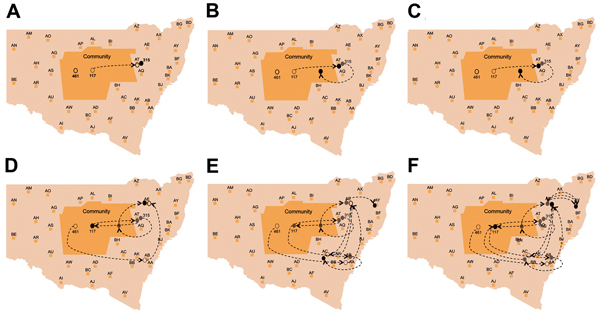Volume 21, Number 5—May 2015
Research
Transmission of Hepatitis C Virus among Prisoners, Australia, 2005–2012
Figure 4

Figure 4. Reconstruction of the likely hepatitis C virus transmission dynamics among prisoners in New South Wales, Australia, 2005–2012. Geographic representation of the transmission dynamics among 3 participants identified in cluster A over a 12-month period and co-location dynamics of these participants during October 2007–October 2008 between the prisons in New South Wales are shown. Participants moved between 4 prisons and between prisons and the outside community (arbitrarily located in the center of the map of New South Wales). A) Time 0 (earliest record of location of the cluster members before co-location events occurred between any of the pairs within the cluster); B) 2 months after time 0; C) 4 months after time 0; D) 8 months after time 0. E) 10 months after 0, F) 12 months after time 0. Prisons are de-identified, indicated with a 2-letter code and random locations. Arrows represent the movement of participants between 2 prisons. Filled ovals indicate viremic participants; empty ovals indicate nonviremic patients; gray indicates previous location (past movements) of each participant.
1Additional HITS-p investigators are listed at the end of this article.